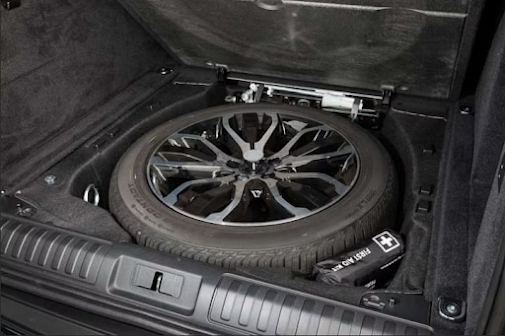Knowing How Tyre Tread Depth Affects Vehicle Safety?
Tyres on cars are vital because they protect you and other drivers. Following the UK's minimum tyre tread depth regulations is an easy yet efficient method to keep you safe and out of harm's way.
The Role of Tyre Treads
The only thing that connects your car to the road are its tyres. Power gearbox, brakes, and steering are all made possible by them. When doing these tasks, the tread depth of your tyres is crucial to preserving the safety of your vehicles. It offers grip on the road surface and influences how the automobile handles.
The tread depth of new tyres is 8–9 mm. You can drive safely until the minimum depth of tread on your tyre is 1.6 mm, which is measured over 75% of the tire's width and around its whole circle. The depth of the automobile tyre tread has the most impact on safe driving in snowy and rainy weather. Other important elements include the tread pattern design and the rubber compound used in your tyres. When driving on wet and snow-covered roads, braking effectiveness will gradually deteriorate due to lower tyre tread depths.
Examining the Tread Depth of Your Tyres
Every 14 days, or ideally before any lengthy drive, check the tread depth of your car's tyres. Examine the tread wear indicators first. These are tiny, horizontal bars that are inserted into the tyre grooves all the way around your tyre, spaced evenly. Recall that 1.6 mm is the minimum tread depth required in the United Kingdom. This is how you should determine whether it's time to change your tyres. You will know you have achieved the minimum tread depth when your tyre has worn level with these tread wear indicator bars. You'll need to get new tyres.
The 20-p test
Put a 20p penny into the main tread grooves of your tyre. Your tread is over the permitted limit if you are unable to see the outside band of the coin. If apparent, get quick advice from a tyre specialist. Verify each tyre in three different places for accuracy. Assess tread depth fast by using the 20p test.
The measuring of tyre depth is more precise when done with tyre gauges. Digital tyre depth gauges and laminated cards with colour indications are two types of gauges available.
To find out how close you are to achieving your minimal depth, just place the gauge into the tire's groove.
When Do You Need New Tyres?
When choosing whether or not to change your tyres, there are a few things to take into account:
Wear and Tear
Car tyre wear is accelerated by very low tyre pressure. Additionally, it causes a fuel consumption increase of up to half a litre for every 100 miles.
Another sign that you need new tyres is uneven wear. Sometimes there is enough tread depth in certain areas of the tyre, but not in others. Various tread wear signs and causes for this problem may exist, including:
- tyres that are not oriented in line with the path of travel
- improperly configured tracking
- Unbalance in the tyre's dynamics or static
- Parking so close to the curb
- A wheel bearing with excessive play or faulty shock absorbers
Tyre Tread Depth
The minimum permissible tread depth for tyres is 1.6 millimetres. Some tyre experts advise at least 3 millimetres for summer tyres and 4 millimetres for winter tyres for best performance.
Tyre Age
Some tyre manufacturers often recommend replacing tyres no later than ten years. Some stay for a maximum of five or six years. In a matter of years, tyres lose their cutting-edge characteristics. With time, the rubber compound hardens and causes the materials to become brittle and fatigued.
Advice on Tyre Care: How to Get the Most Out of Your Tyres
Are you considering strategies to extend the life of your tyres? Here are some pointers to bear in mind:
1. Look for any anomalies in your tyres.
Always examine your tyres for abnormal wear and tear, as well as other anomalies like worn tyres, nails or other foreign items lodged in them, splits from cutting or puncturing them and bumps on the outside walls. Do this, particularly in the wake of an extended trip.
Verify the depth of your tyre tread.
The top focus ought to be safety. When considering strategies to get the most out of your tyres, the most crucial thing to keep in mind is tyre depth. Following the UK's recommended legal tyre tread depth always pays off.
3. Frequently check your tyres' pressure.
Low pressure leads to more wear and tear and more fuel being used. Increase the tyre pressure to up to 0.3 bar over the suggested pressure for a longer tyre life. Once a month at the very least, check and adjust the pressure.
It is wise to regularly inspect your Tyres Ebbw Vale, slow down on wet and icy roads and think about replacing your tyres in good time because braking capability gradually decreases with decreasing wear.




Comments
Post a Comment